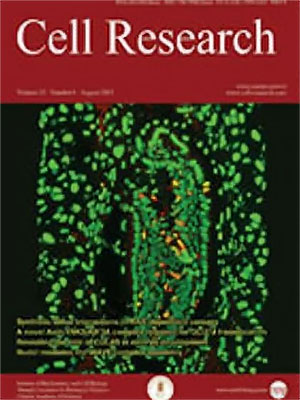Volume 13 Issue 5, October 2003: 335-341
ORIGINAL ARTICLES
Tissue engineering of blood vessels with endothelial cells differentiated from mouse embryonic stem cells
GAN SHEN*, HSIAO CHIEN TSUNG*, CHUN FANG WU, XIAO YIN LIU, XIAOYUN WANG, WEI LIU, LEI CUI, YI LIN CAO**
Department of Plastic and Reconstructive Surgery, Shanghai 9th People's Hospital, Shanghai 2nd Medical University, Shanghai Key Laboratory of Tissue Engineering, Shanghai 200011,China. E-mail: YilinCao@sohu.com
* Co-first authors. Dr. Gan SHEN now works in ZhongDa Hospital of Southeast University.
Correspondence: YI LIN CAO(YilinCao@sohu com)
Endothelial cells (TEC
3 cells) derived from mouse embryonic stem
(ES) cells were used as seed cells to construct blood vessels. Tissue engineered
blood vessels were made by seeding 8¡Á10
6 smooth muscle
cells (SMCs) obtained from rabbit arteries onto a sheet of nonwoven polyglycolic
acid (PGA) fibers, which was used as a biodegradable polymer scaffold. After
being cultured in DMEM medium for 7 days in vitro, SMCs grew well on the PGA
fibers, and the cell-PGA sheet was then wrapped around a silicon tube, and implanted
subcutaneously into nude mice. After 6~8 weeks, the silicon tube was replaced
with another silicon tube in smaller diameter, and then the TEC
3 cells (endothelial cells differentiated from mouse ES cells) were injected inside
the engineered vessel tube as the test group. In the control group only culture
medium was injected. Five days later, the engineered vessels were harvested
for gross observation, histological and immunohistochemical analysis. The preliminary
results demonstrated that the SMC-PGA construct could form a tubular structure
in 6~8 weeks and PGA fibers were completely degraded. Histological and immunohistochemical
analysis of the newly formed tissue revealed a typical blood vessel structure,
including a lining of endothelial cells (ECs) on the lumimal surface and the
presence of SMC and collagen in the wall. No EC lining was found in the tubes
of control group. Therefore, the ECs differentiated from mouse ES cells can
serve as seed cells for endothelium lining in tissue engineered blood vessels.
FULL TEXT | PDF
Browse 2362


